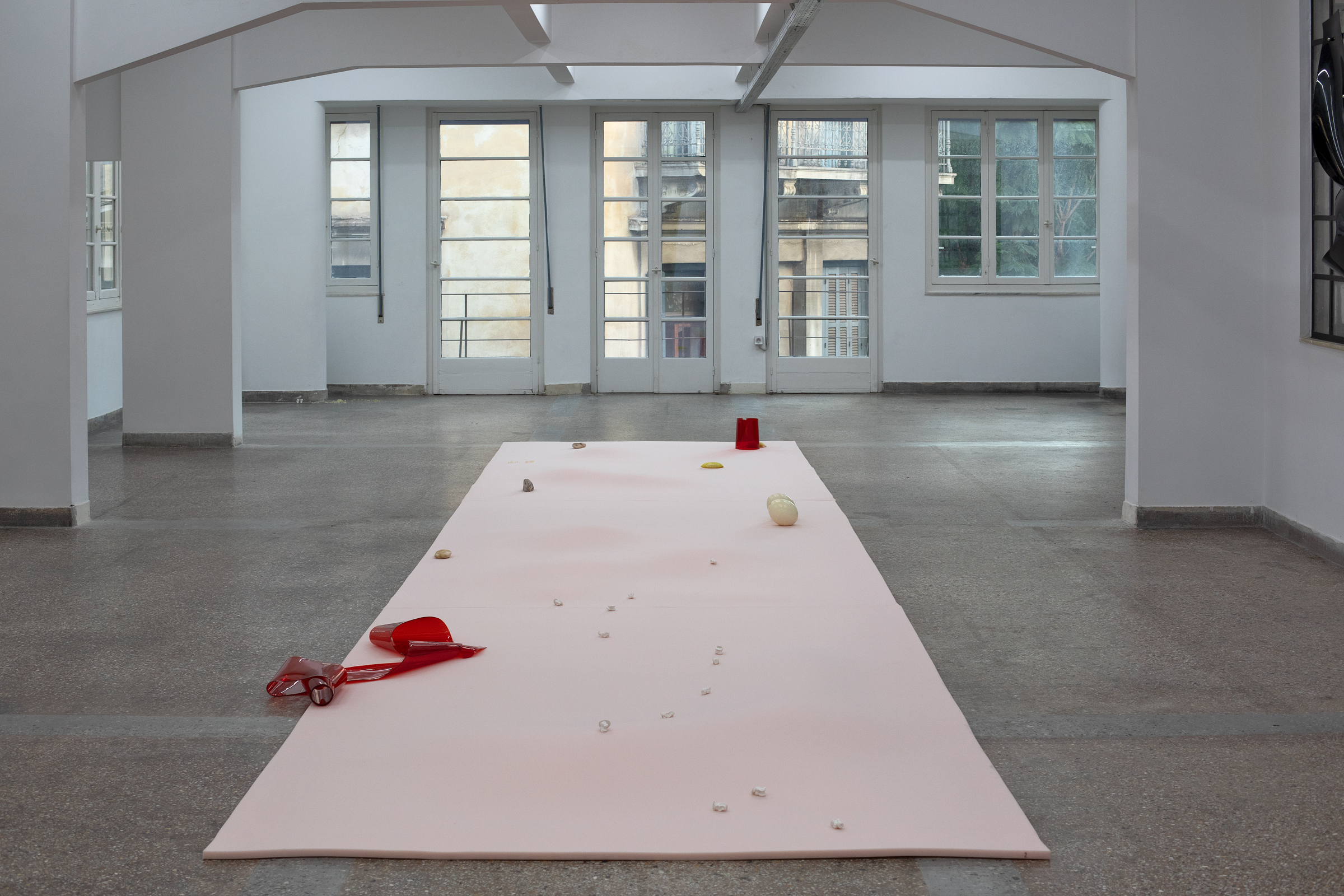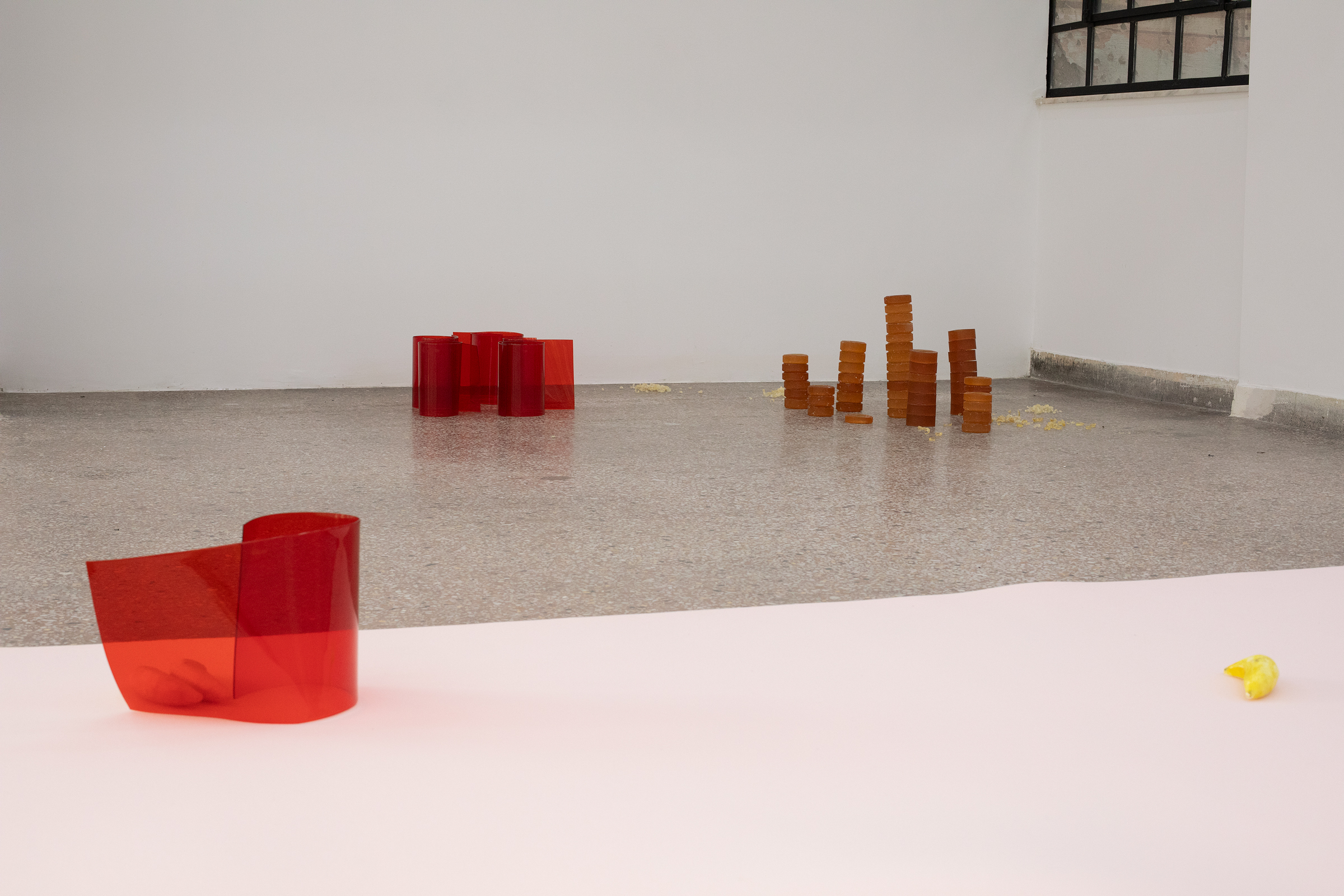bed
Solo exhibition, Haus N Athen, Athens, Greece, 2024















The two large format photographs presented in Kobie Nel’s exhibition ‘bed’ were taken by her during fieldwork in Rainbow Valley, a sacred site for the Upper Southern Arrernte people, the traditional landowners in the Northern Territory of Australia.
This place, called Wurre, by the traditional landowners is associated with ritual rainmaking stories. In 1990, a reserve was established to protect the unique ecosystem comprised of sandstone formations, Indigenous Australian art, artefacts, and other sacred natural objects that surround a striking sandstone cliff. The central cliff, layered in iron-rich shades of red and ochre, stands in stark contrast to the lighter sandstone that turns pale yellow or gold as the late afternoon light settles, mirroring the site’s namesake; a rainbow.
Nel’s photographs capture more than just these grand formations. They reveal an intimate landscape, focusing on subtle tracks and impressions left in the desert sand by the movements of animals and insects. Each trace left by these creatures forms a pattern on the desert surface, sometimes disappearing into its depths, leaving marks that invite speculation about what made them. The photographic images are both instant and ancient, capturing a place where industrial interference has been paused, allowing a rare instance of regeneration. The images encourage viewers to linger on the quiet details in the sand, the faint signatures of desert life that fade as the sands shift or the light changes.
As one navigates the exhibition space, Nel invites the audience to unearth further minute details in a large floor sculpture. The details contrast against the immediacy of the photographic image and the camera’s moment of exposure, drawn out, sketched within the exhibition floor space over time in a slow stroke.
These desert imprints are mirrored through careful interplay of sunlight, foam, and other materials. Sunlight filters in, marking large sheets of foam with subtle tonal shifts, echoing the natural rhythms of sunlight on desert sand. The foam sheets absorb and transform along with the movement of sunlight, creating an alternative, evolving archive as the space itself operates as a camera obscura, forming a layered document of exposure. This foam, flesh-like and unprotected, behaves almost as a body, vulnerable and receptive, absorbing light as it would an imprint or a memory. The foam, like a skin, is an archive of what it comes into contact with, collecting moments as if guarding against something that has already been lost. Its flesh colour gradually decays into an ochre colour throughout the exhibition period, morphing into the tone of the desert’s sand. Also present is the eggshell, made almost entirely of calcium carbonate crystals, forms a semipermeable membrane, which means that air and moisture can pass through its pores. The shell has a long history of use by humans as a container, often as a water bottle, but also for producing decorative artworks, morphing in its purpose between a utensil and a mark of mankind’s greed for harvesting natural elements.
The presence of the foam recalls protective membranes, both natural and man-made, each one a fragile barrier between the interior and the forces of erosion, extraction, and contamination. Here, PVC objects, made from fossil fuels and coloured in black and red, remind us of extracted materials (such as oil or blood) transformed into something alien and toxic. These materials, manipulated from their natural origins, masquerade as different entities, echoing the themes of appropriation, extraction, and transformation that shape our relationship to the environment, highlighting a soul blindness that mechanised interventions have fostered through their disregard.
Text and curatorial work by Scott Elliott